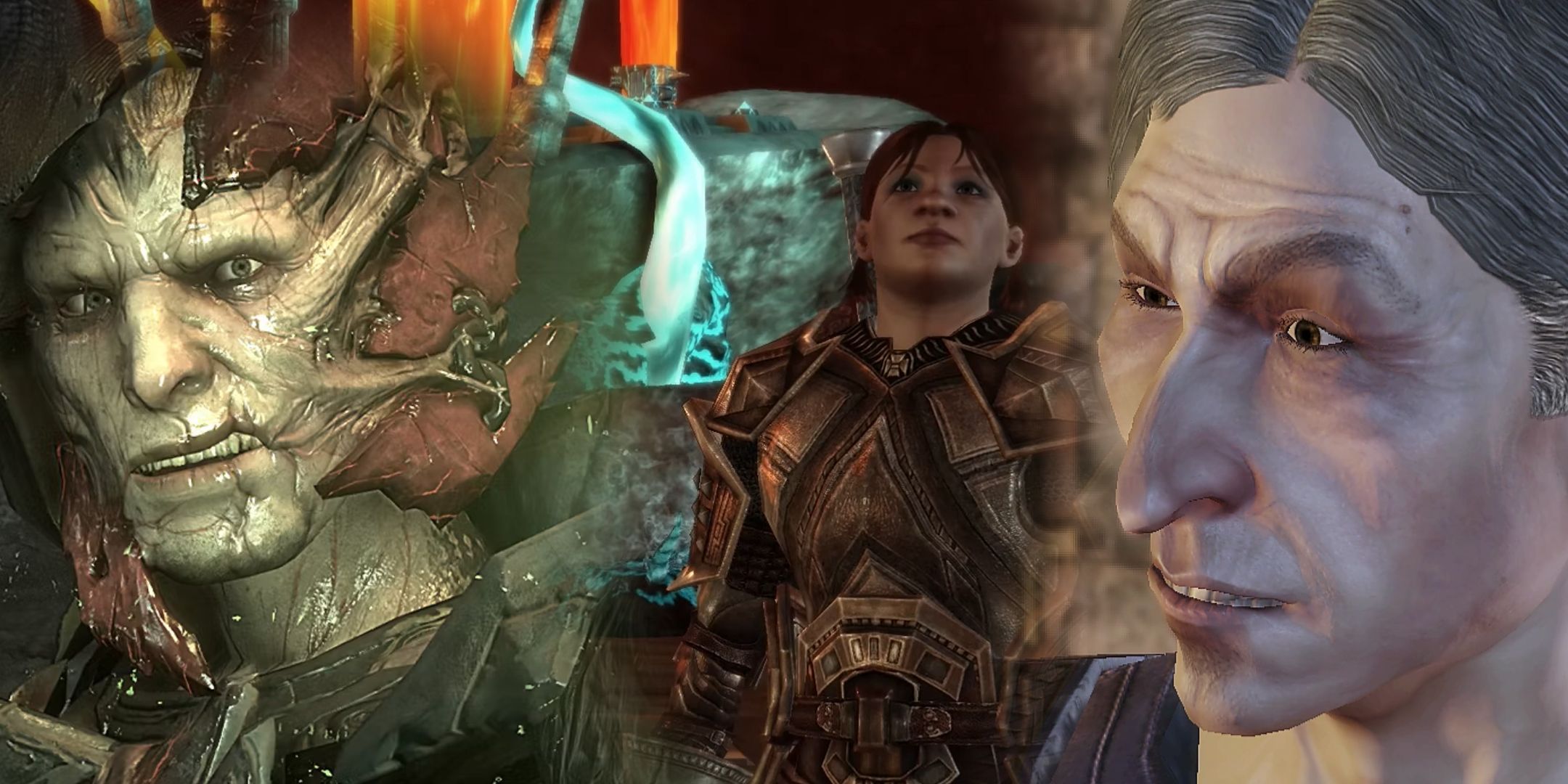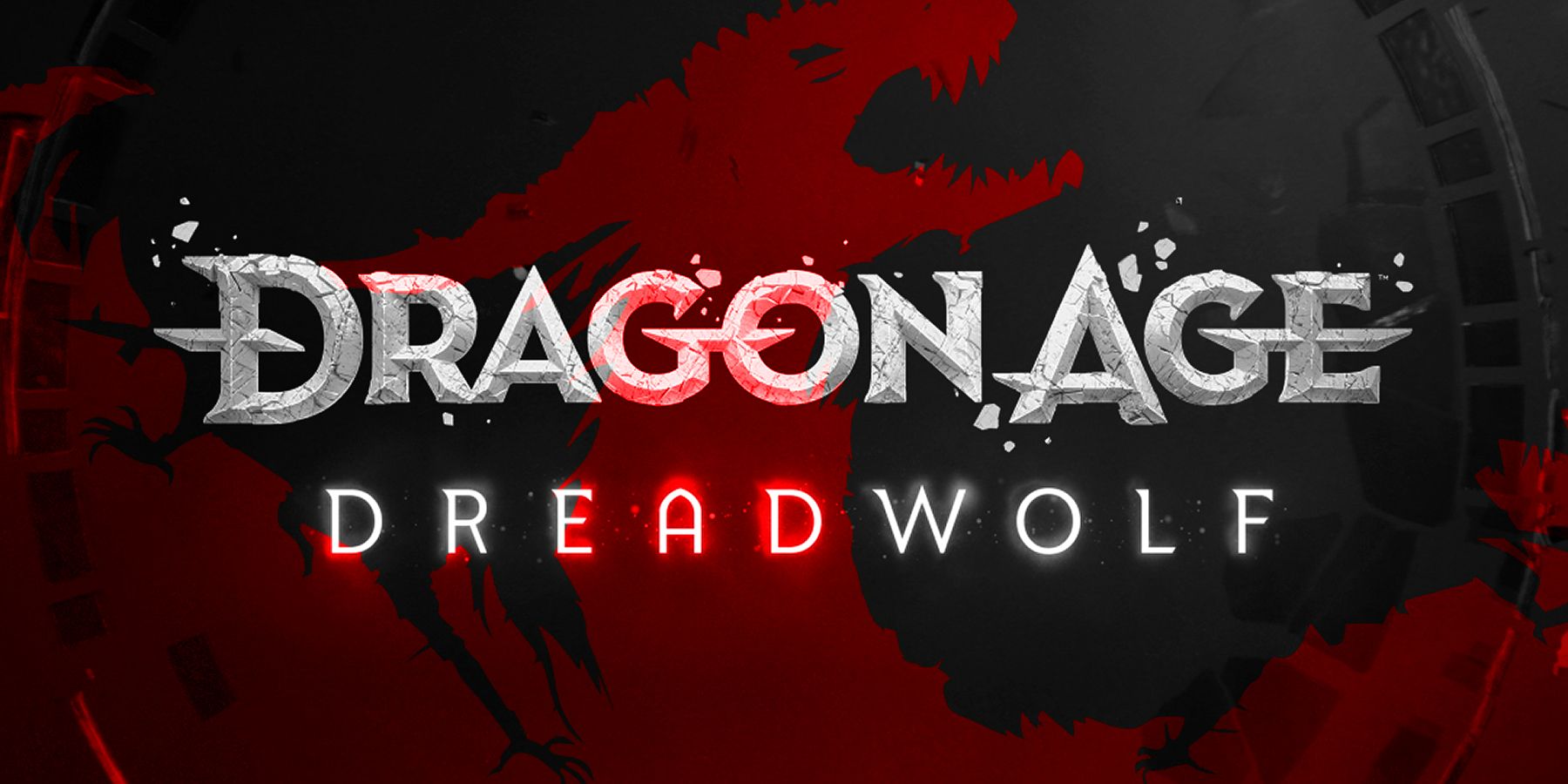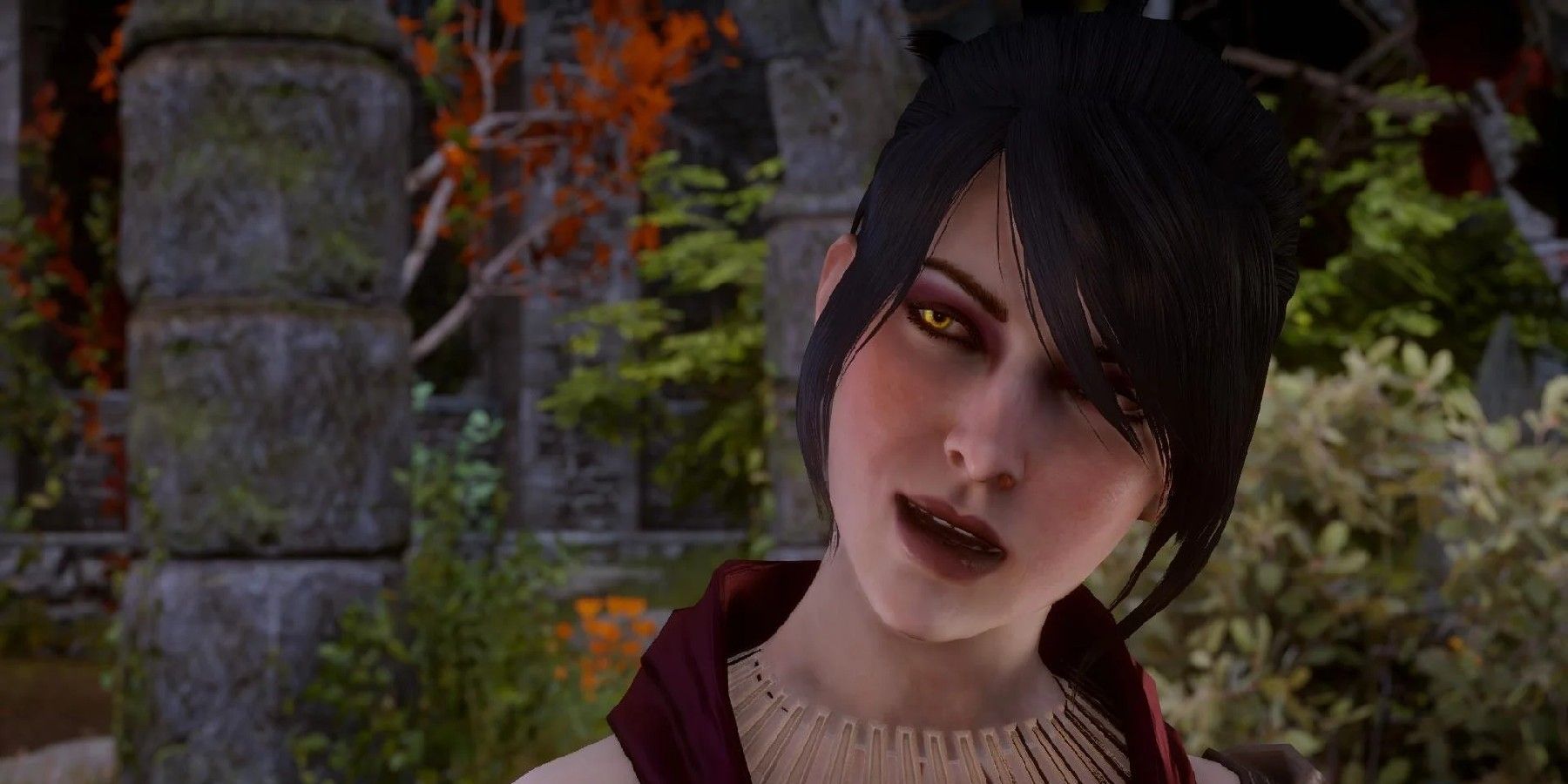There is power in blood – the Dragon Age games have, from conception, put a lot of weight into this statement, but its ramifications over the course of the saga have lacked a unified sense of consistency. To become Grey Wardens, recruits must undertake a ritual called the Joining that entails drinking darkspawn blood, and thus forever binding themselves to a tainted existence. The creation of phylacteries, which the Circle of Magi employs to track down apostates, also uses blood as a necessary component. These examples, though important in the lore of Thedas, pale in comparison to the significance imparted on the use of blood magic.
A staple of the franchise, blood magic has featured prominently ever since Dragon Age: Origins launched in 2009. Though using blood as a source of power is hardly a novel concept in fantasy, the Dragon Age games have certainly established one of the more unique and interesting takes on this trope. To cast spells in the Dragon Age universe, mages must tap into the Fade, a realm that stands in parallel to Thedas, separated by a magical barrier called the Veil. Mages can also circumvent this by tapping into the inherent power carried in the blood. This practice is known as blood magic, and its practitioners are called blood mages.
The Dissonant Use of Blood Magic in Dragon Age
Blood magic is widely considered taboo in the Dragon Age setting, and repercussions for its (mis)use are presented as severe and damning… unless the Hero of Ferelden uses it. Over the course of Dragon Age: Origins, the player is put in a position to use blood magic to perform horrific and even sometimes heroic acts – be they well-intentioned or selfish in nature. In order to even access the specialization, the Hero of Ferelden must agree to let the desire demon continue its possession of the Arl of Redcliffe’s son.
It is important to note that the mage companions in Dragon Age: Origins can also pick up the art of blood magic should the players desire it, regardless of that character's personal beliefs or their misgivings about the practice. Given how contradictory someone like Wynne being a blood mage must be, it is imperative to separate gameplay from story and analyze the role of blood magic purely within the confines of the plot, as well as how its framing may yet change in future titles.
While only a few players decide to dabble in blood magic since they represent traditionally evil choices in the first game, there is one application that is taken by a significant number of people: agreeing to the ominous ritual proposed by Morrigan that would ensure they survive the final events of Dragon Age: Origins. Killing an Archdemon without Morrigan’s ritual results in the death of either the Hero of Ferelden or Alistair, but should players consent to Morrigan’s ritual and spend the night with the Witch of the Wilds, they are essentially cheating death. Furthermore, players who romanced Morrigan also gain a son from the union. When it comes to the protagonist, there are no negative repercussions for a choice framed as objectively reckless and wicked within the world of Thedas.
Similarly, Hawke enjoys the freedom of being a blood mage unopposed in a city where Templar oppression causes the use of blood magic to surge to historical levels. In a stark contrast to this, Hawke’s family are themselves a victim of a particularly inhumane use of blood magic, and one of Hawke’s companions – Merill – is shunned for her practice of the art and suffers for it.
Though Dragon Age 2 had its issues stemming from a rushed production, it rarely failed to paint an interesting clash of freedom against oppression and order against chaos – which is what makes a blood mage Hawke an even bigger question mark into how it fits into its thematic tapestry, as the game fails to address it with the same attention it does for its other members of the cast.
How Dreadwolf Can Set the Blood Magic Record Straight
With Dragon Age: Inquisition having its story pivot into an exploration of the Fade after the tearing of the Veil, blood magic took a temporary backseat in both gameplay and plot. After all, having the Herald of Andraste – leader of the holy Inquisition – be a blood mage was a hard sell, and the developers prudently spent their resources on other parts of the game rather than attempting to make it work.
Being largely set in the Tevinter Imperium, Dreadwolf is the perfect opportunity for developers to unify the dissonant depiction of blood magic in Dragon Age into something more mature, as a logical evolution of the concept introduced so long ago. Unlike in other corners of Thedas, blood magic isn’t prohibited in Tevinter: most of its folk heroes have used it, and it’s thus inseparably weaved into the culture. In Tevinter, blood magic shouldn't be treated as just another flavor of gameplay. It has potential to be so much more than that.
While an unethical use of blood magic is shunned in the Imperium, only the politically weak suffer any real repercussions. The setting of Tevinter blows the gate wide open for blood magic to take on new roles in the story. The usage of this arcane practice has yielded many positive outcomes in the past, even if the price paid was unconventional – Merill purifying the Eluvian is but one example of this. As stories featuring blood magic used in a positive light begin to emerge, and our own heroes suffer no repercussions for its use, it’s becoming clear that blood magic is ultimately being portrayed as a dangerous tool that’s not yet fully understood, rather than a gateway drug into demonic possession.
Blood has always been a part of Dragon Age’s aesthetic, and it featured heavily in the official artwork for the first two games. Having blood magic in Tevinter be wielded by both the corrupt and the honest would do wonders in thematically unifying this iconic part of the Dragon Age setting. There is an important caveat to consider, however. Though blood that is willingly given is a perfectly suitable alternative to lyrium when it comes to performing complex spells, the convenience of its use invites appalling ritualistic sacrifices still practiced behind closed doors in the Imperium.
The reputation of blood magic is understandably low because it attracts a certain type of practitioner. Most famous among these are the Magisters Sidereal who used unimaginable quantities of lyrium and slaves to fuel their determined ascent into the Golden City. If the Chantry in Dragon Age is to be believed, the very use of blood magic blackened the Maker’s seat, and the magisters returned to the world now tainted as the first darkspawn.
Given what players have learned of the Fade and its creation in Dragon Age: Inquisition’s Trespasser epilogue, one can’t help but wonder just how it all connects to the Dread Wolf and the Dalish interpretation of events. Based on the words of Inquisition's villain, the popular theory is that the Golden City was, in actuality, the lost elven city of Arlathan holding the Evanuris locked within its walls and already blighted when the magisters entered it.
Ultimately, this is something for the next Dragon Age game to answer. Given who players are up against and where the story takes place, it would be a missed opportunity if blood magic didn’t play some part in unlocking the riddle behind one of the setting’s most enthralling mysteries.
Dragon Age: Dreadwolf is in development.






